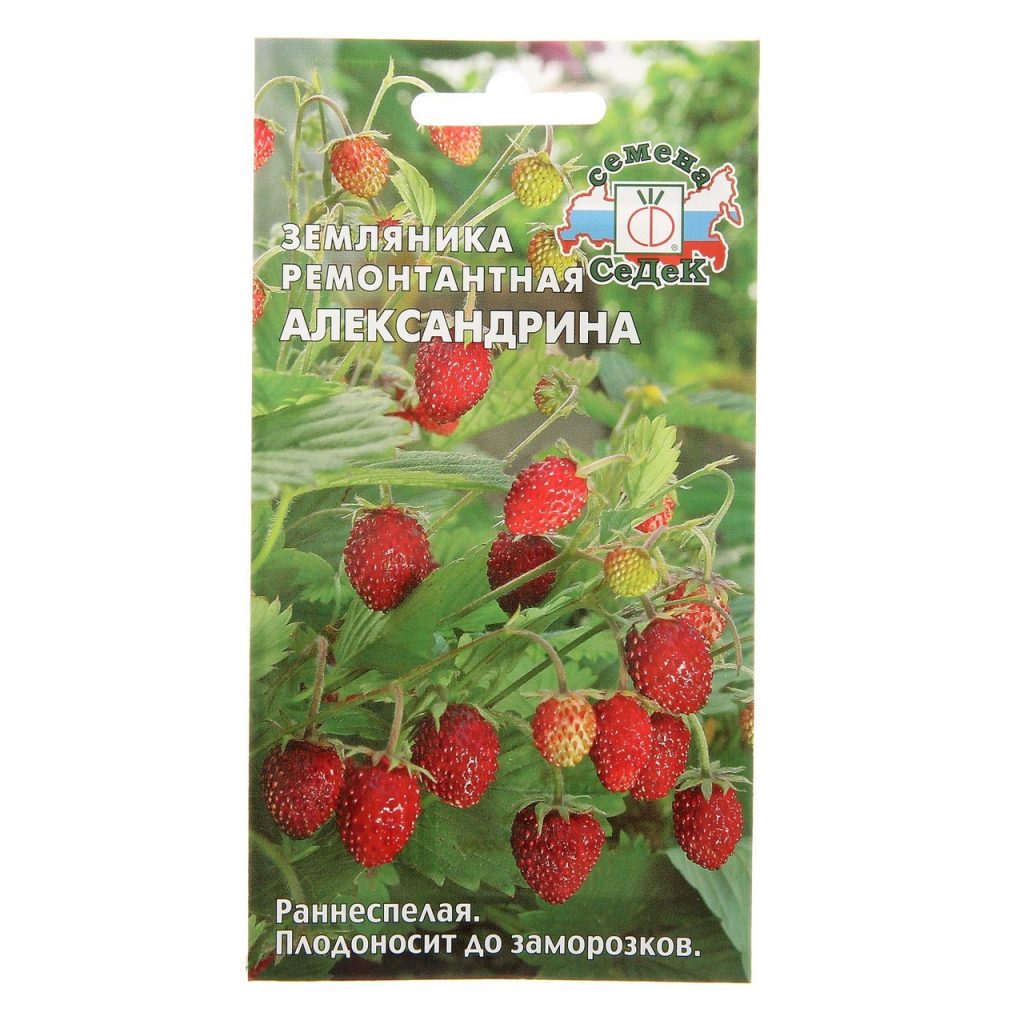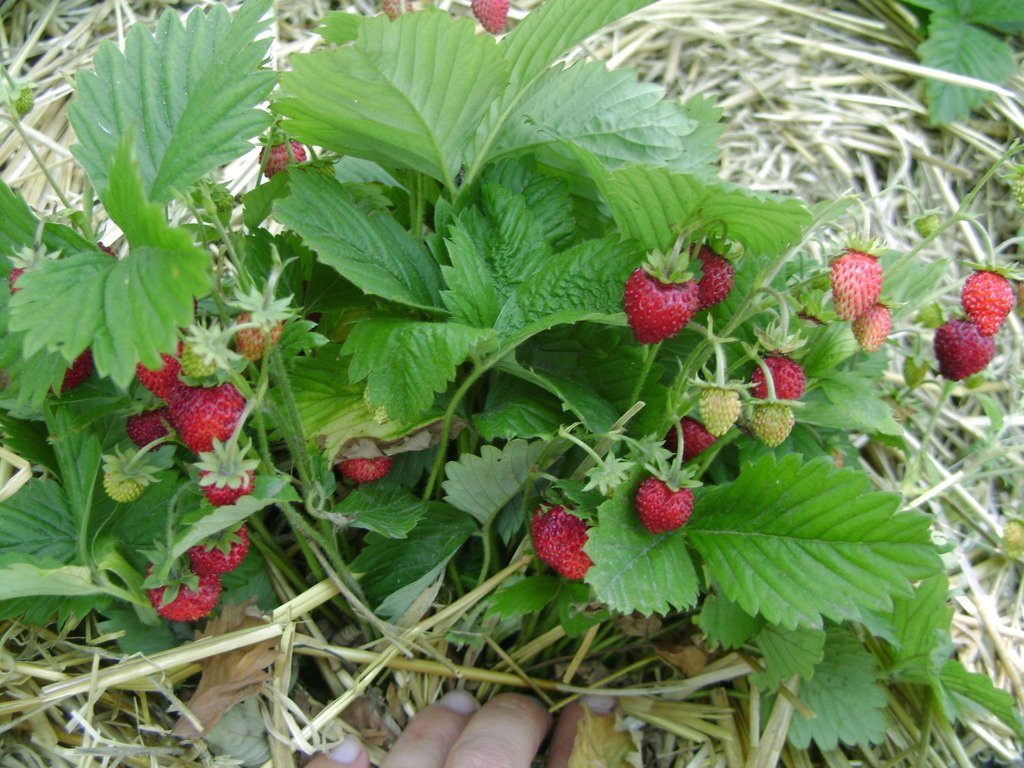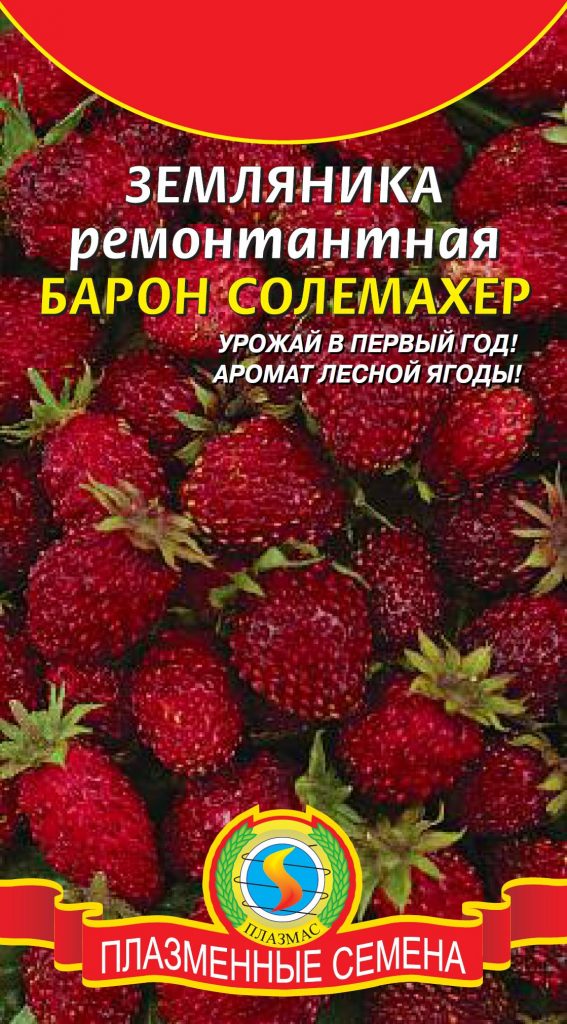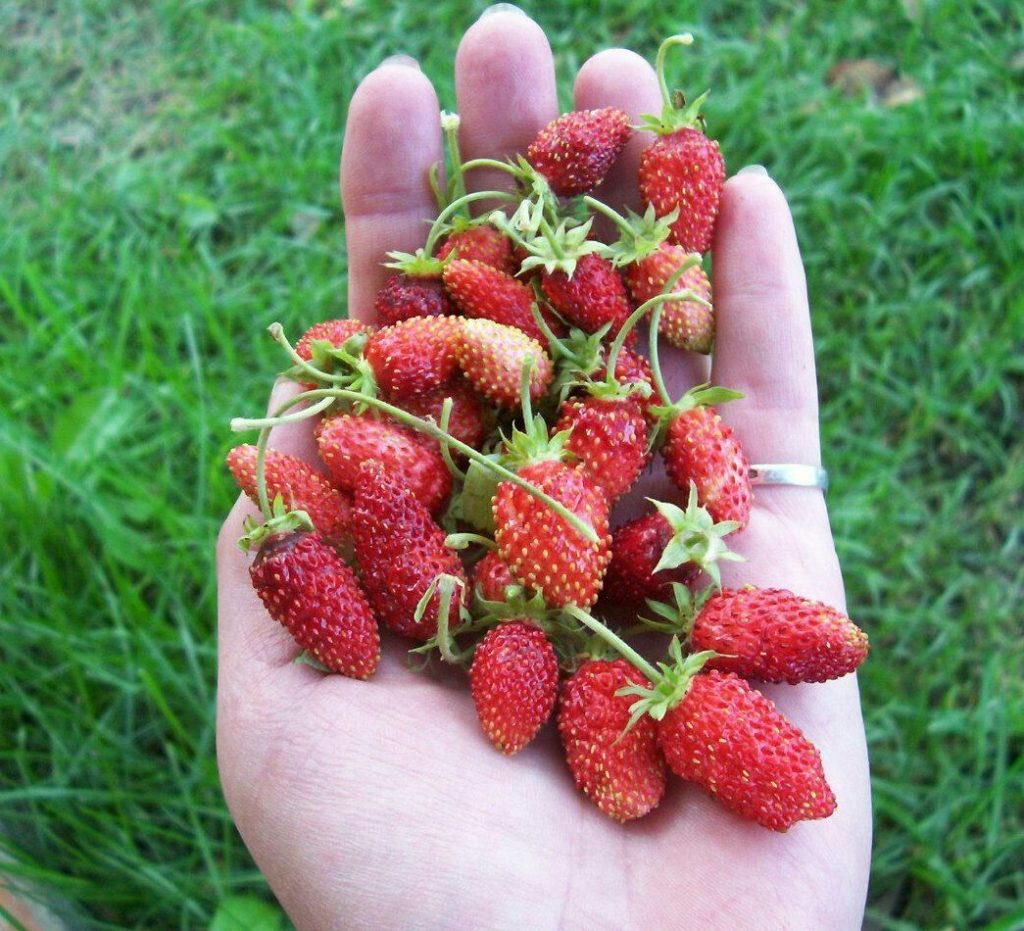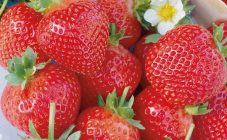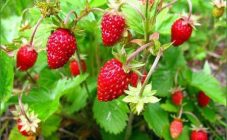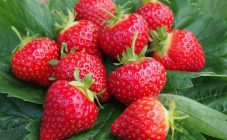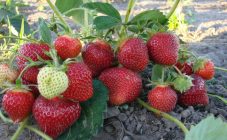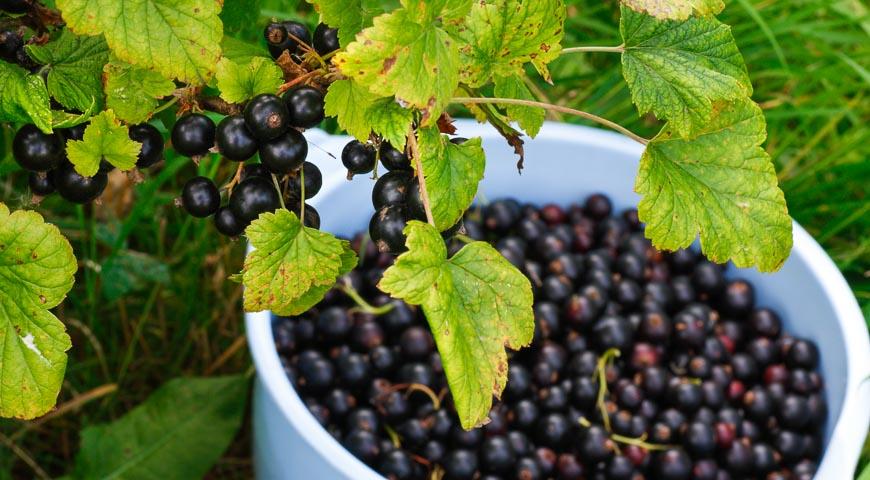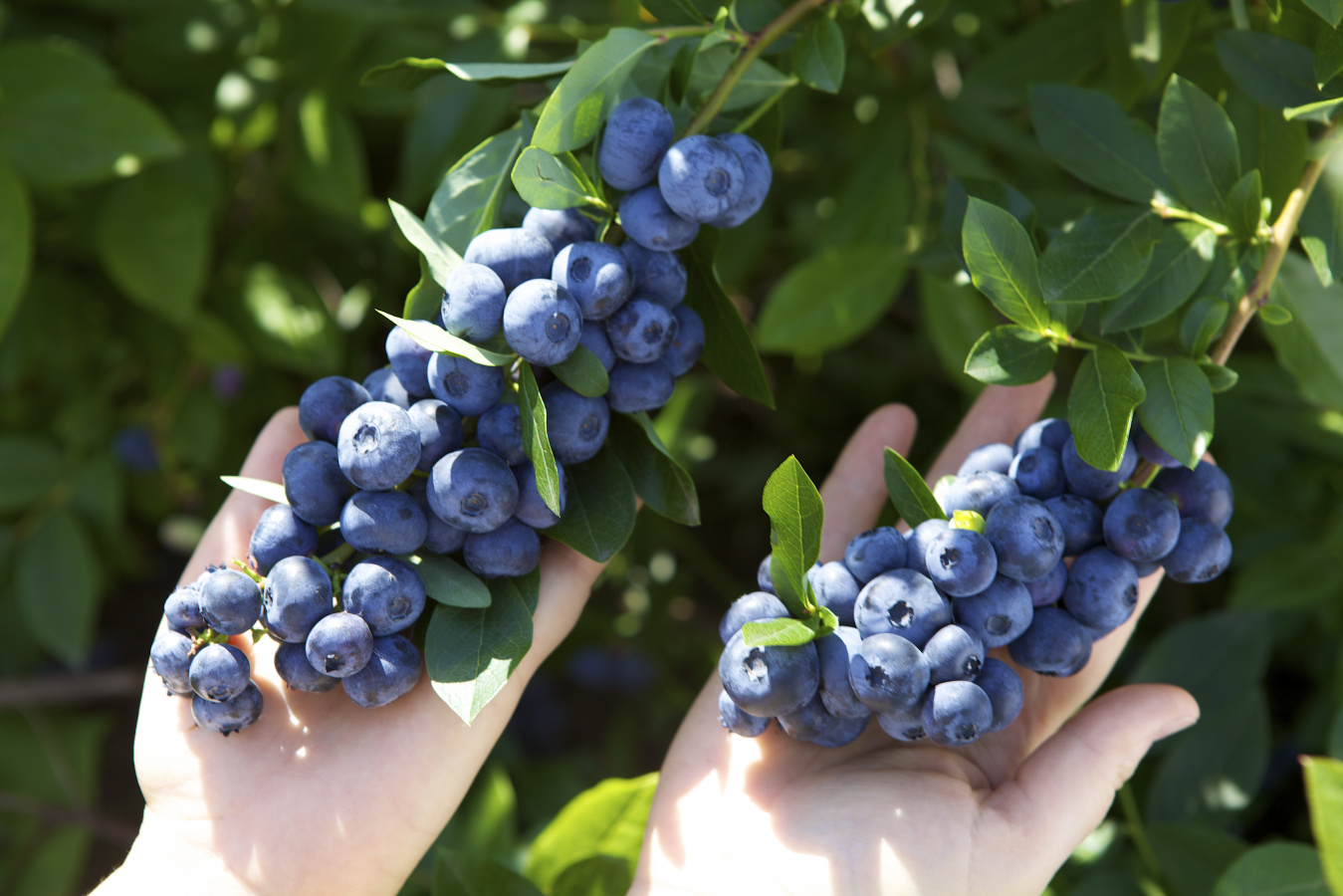The combination of such qualities as the absence of a mustache and fruiting throughout the summer period makes the varieties of beardless remontant strawberries popular among gardeners. The species diversity is large enough. All that remains is to make a choice based on the characteristics of each variety.
Mustache remontant strawberry: the best varieties
The variety of strawberries is quite large. Popular varieties:
- Alexandrina;
- Ali Baba;
- Snow White;
- Weisse Zolemacher;
- Rote Zolemacher;
- Yellow miracle;
- Rügen;
- Solemacher;
- Queen Elizabeth;
- Forest fairy tale;
- Garland.
Each variety has its own distinctive features and growing conditions.
Alexandrina
Resistant to frost. Fruiting lasts until October. The berry is large - up to 7 grams, has a rich dark red color. Within one season, the bush gives up to 300 berries. This litter is popular both in Siberia and in central Russia, as it is resistant to pests and diseases.
Ali Baba
It is known for a tall bush - up to 15 cm. The first inflorescences appear in May, flowering continues until freezing. The first crop is harvested in mid-June. Refers to small-fruited plants, the weight of the berry can reach 5 grams. They are bright, deep red, white inside. They have a strong aroma that attracts attention from afar. The plant is resistant to pests and diseases.
Snow White
The name speaks for itself - the berries are white. The shape of the fruit resembles a truncated cone at the end. They have medicinal properties inherent in wild strawberries.
Weisse and Roto Zolemacher
more referred to as decorative varieties. They are distinguished by beautiful and long flowering, however, the berries are small, differ in shape and size.
Yellow miracle
A popular variety in the Urals. The peculiarity of the berry is its rich yellow color and cone shape. After eating the berry, a pleasant aftertaste with the aroma of pineapple remains. The variety is resistant to changes in environmental conditions, short drying or hypothermia.
Rügen
refers to small-fruited varieties of mustache-free strawberries. The berries are elongated and dark red in color. They are distinguished by a sour strawberry flavor. Grown in the Urals.
Solemacher
Belongs to varieties with small-fruited berries. It was bred by selection in the first half of the 20th century. The fruit tastes a little sour, while the sugar content in them reaches 7%. From a bush per season, it is possible to collect 0.5 kg of berries. Moreover, the plant is resistant to temperature fluctuations.
Queen Elizabeth
Refers to large-fruited strawberries, berries weighing from 50 to 100 grams. The shape of the fruit is correct, the flesh is deep red. The first fruits ripen at the end of May. Productivity - up to 1.5 kg per bush per season.
The fruits are transportable and well tolerated.
Forest fairy tale
Popular for its miniature appearance. The bush is completely covered with small berries up to 5 g each. They have a dark red hue. It tastes like wild strawberries.
Garland
Grown in the suburbs and gives a rich harvest. The berry is large. A feature of the bush is a long peduncle, thanks to which, even in an ordinary garden bed, the berries remain clean, do not come into contact with the ground.By the end of the season, the fruits do not become smaller, and the flowering remains dense and rich. The berry itself is distinguished by good keeping quality, therefore, it is subject to long-distance transportation.
Before planting strawberries, you should decide on such parameters as:
- the size of the fruit (large-fruited begin to ripen later, yield three, rarely 4 waves, small-fruited bloom without interruption and bear fruit all summer). Large strawberries are often called strawberries;
- resistance to weather changes. Drought-resistant varieties are selected for the Urals, frost-resistant varieties for Siberia;
- exactingness to the soil and its composition;
- when growing strawberries for sale, the keeping quality of the berries for transportation purposes will become an important quality;
- growing method - in open ground or closed;
- resistance to disease.
Most often, preference is given to a hybrid variety, specially bred for the specific requirements of the gardener.
Agrotechnics
Mustacheless strawberries and strawberries have gained popularity due to their ease of care. During the season, there is no need for constant control over the movement of the mustache and its growth over the area of the site. The bush grows in one place, tolerates winter without problems, but is prone to thickening, therefore, it needs to be thinned. To propagate a bush, you will also have to try.
Depending on the genetic characteristics of the plant, either it blooms all summer long giving a crop gradually, or it blooms 3-4 times, while the fruits ripen together. 4 harvest, as a rule, can be obtained only in the South of Russia or by planting berries in a closed ground.
Based on these properties of strawberries, the rules for caring for it are determined.
Difficulties arise with obtaining seedlings. In one place, most plant varieties have not been cultivated for more than 4 years in a row. After that, it almost stops blooming, the crop becomes shallow. In the absence of a mustache, a new plant is obtained in two ways:
- Grown from seeds.
- Obtained by dividing an adult overgrown bush.
The second option is more common and simple, but not suitable for all varieties.
To obtain a seedling from seeds, you need to prepare a small box, light soil. Mix the prepared seeds with sand for even sowing. Plant in moist soil in mid-spring. The container is covered with a film until shoots appear. The dive is carried out after three true leaves have grown. After the appearance of the sixth seedling, it must be planted in open ground.
Another way to get a young bush is reproduction by dividing the old plant into several parts. In this case, the young plant will be stronger and more adapted to the local conditions than grown from seeds.
Seedlings are sown on the beds in compliance with the rules of crop rotation and the planting scheme. Onions and carrots are excellent precursors to berries. Do not plant strawberries after zucchini, eggplants or tomatoes.
The bushes should be arranged in rows every 30 cm from each other. The optimum strip width is 1.2 m. After planting, it is important to maintain the soil moisture level. For best results, it can be mulched. The bushes should give the first new leaves a week after transplanting. They will indicate a successful transplant. The newly transplanted bush yields in the first year, towards the end of the season. It is not plentiful, but it makes it possible to evaluate the selected variety, especially if it is sown by a gardener for the first time.
To prevent the disease of the bushes, the soil is fertilized. It is best to use ash, superphosphate or chemical compounds. In addition, in the process of growth, the plant needs nitrogen fertilizers. Their lack will be evidenced by a slower growth rate of leaves, and an excess - by saturated fatty leaves with a simultaneous absence of inflorescences and berries.
Depending on the variety, the berry ripens on one bush in unison or one by one.
So, remontant mustache strawberry is widespread due to the ease of caring for the plant and the long fruiting period. The varietal variety allows you to choose a berry depending on the preferences of the gardener. The best varieties for the regions of the Middle Strip and the Moscow region will be Queen Victoria and Alexandrina.
The yellow miracle gives a rich harvest in the Urals, despite weather fluctuations and droughts. Garden strawberries are grown both outdoors and indoors.
